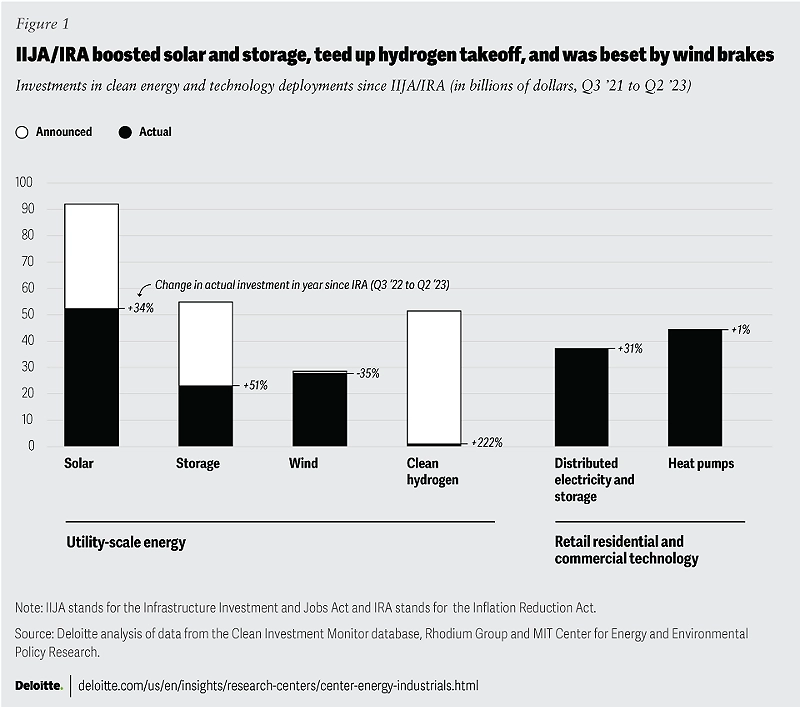Clean technologies will play a significant role in this evolution, with three times as much investment going into new offshore wind projects than into new coal- and gas-fired power plants. This however will require major infrastructure updates as the biggest growth will be happening in remote areas, where transporting and storing heavy-duty cargo is a challenge.
Peter Bjelovuk, Global Energy Segment Director at Nefab, shared what the industry should do to prepare for the growth. “The transition to clean energy is happening worldwide and it’s unstoppable. It’s not a question of ‘if’, it’s just a matter of ‘how soon’, said Bjelovuk. Latest research projects the electricity generation in energy market will reach 28.34 tKWh by 2024, which is an annual growth rate of 4.84%. Follow along as we discuss what the energy leaders must do today to prepare for tomorrow’s challenges.

By the end of 2023, the US Energy Information Administration expects utility-scale solar installations to more than double compared to 2022, to a record-breaking 24 GW, and wind capacity to rise by 8 GW, as indicated by a Deloitte’s report.
Booming investments into renewable energy globally
In line with the COP28’s call to “transition away from fossil fuels in energy systems and achieve net zero by 2050”, the global push for renewables is imminent. “The global need for energy is soaring due to population growth, urbanization and industrialization. It will happen both in developed economies, which transition from old type to green type of energy, as well as in developing economies, which energy demands are growing”, explained Bjelovuk.
A good example for the transition into renewable energy in the industrialized countries is the U.S. where the Energy Information Administration announced by the end of 2023 utility-scale solar installations to more than double compared to 2022, to a record-breaking 24 GW, and wind capacity to rise by 8 GW. On the other hand, in the developing countries – like India – the push for urbanization is driving the energy evolution, where the middle class is rapidly growing and expected to reach 40% by 2031. In order to answer this growing demand, the energy grid capacity needs to be upgraded to meet higher demands in the future. This is where the challenges start, as transporting heavy-duty power generators to remote destinations in changing weather conditions is a difficult test both from the logistics and engineering point of view.
Supporting installation services anywhere in the world
For smooth installation all the parts need to arrive at the same time and in good shape, need to be properly packed and labelled for easy unpacking and handling. Some of the shipments will wait for months until the installation is complete, so the packaging also needs to ensure long storage times under changing weather conditions. Therefore, an optimal packaging for delivering the precious energy cargo to its destination must be durable yet light and easy to open and handle. This is where Installation Management Solutions come into play, as it includes illustrated packing instructions, load and site plans and connectivity service for earliest shortage reporting, event alerts and change management. “As a result, Installation Management Solutions save customer capital and resources, while protecting the brand reputation”, explained Bjelovuk.
A good packaging example that meets these stringent demands are nail-less, flat packed boxes made either from wood or plywood, for heavy duty and medium-duty products, that take up minimal storage space and are very easy to handle. Thanks to their strong but lightweight design from qualified wood sources, the boxes are well-suited for valuable, heavy-weight and fragile goods aimed for long-term storage. Depending on the product specification, the packaging should include separate boxes within to make sure all the parts are easily visible, accessible and sequenced in a way that simplifies installation. Using wood packaging from qualified sources demonstrates strong commitment both to the environment and to customers”, added Bjelovuk.
Transforming into digital and sustainable energy supply chains
Another important topic that energy companies should consider before the installation stage is investing in digital services for better visibility and control of their valuable flow. By adding track & trace functionality to each packaging, energy companies are able to monitor the real-time location in transit. “This data can increase efficiencies as well as reduce the total costs of the flows, sometimes even up to 65% cycle time”, added Bjelovuk.

Last, but not least, for transforming global energy supply chains it’s vital to use Life Cycle Analysis (LCA) tools, that track and quantify all financial and environmental data related to packaging and logistics. By measuring the emissions, waste, returnability, and different types of materials in all flows, energy companies can see how much they could save by switching to an alternative packaging solution that ensures that optimal conditions are met during packaging shipment. “Until today we calculated over 3000+ LCAs across various industries. On average, we are reaching double digit savings both financially and sustainably, in line with energy industry’s environmental goals”, added Bjelovuk.
Track & trace platform provides real-time location in transit and can increase efficiencies as well as reduce costs of the flows, sometimes even up to 65% cycle time.
Answering tomorrow's challenges today
It is true that the energy segment is undergoing a major transition towards cleaner, more sustainable energy sources globally and that will bring many changes, including doubling the energy efficiency. However, by combining sustainability and traceability, anything is possible. With the right tools the energy companies can choose the most optimal packaging and logistic solutions, successfully track their assets anywhere in the world in real time and significantly reduce their CO2-eq emissions.
How is Nefab supporting energy sector in this regard? “In 2024, we will focus both on expanding our services globally to offer same-quality support to all our customers regardless of their location, and further developing our digital services portfolio. We believe that last mile optimization is the missing puzzle that the energy sector needs to take advantage of because it can cost the company its reputation”, summarized Peter Bjelovuk.
We save resources in supply chains, for a better tomorrow.
Want to learn more?
GET IN TOUCH
Contact us to learn more about our sustainable solutions driving supply chains forward.
LEARN MORE
GreenCalc
Nefab’s own certified calculator measures and quantifies financial and environmental savings in our solutions
Sustainable Solutions
Engineered packaging for sustainable supply chains

